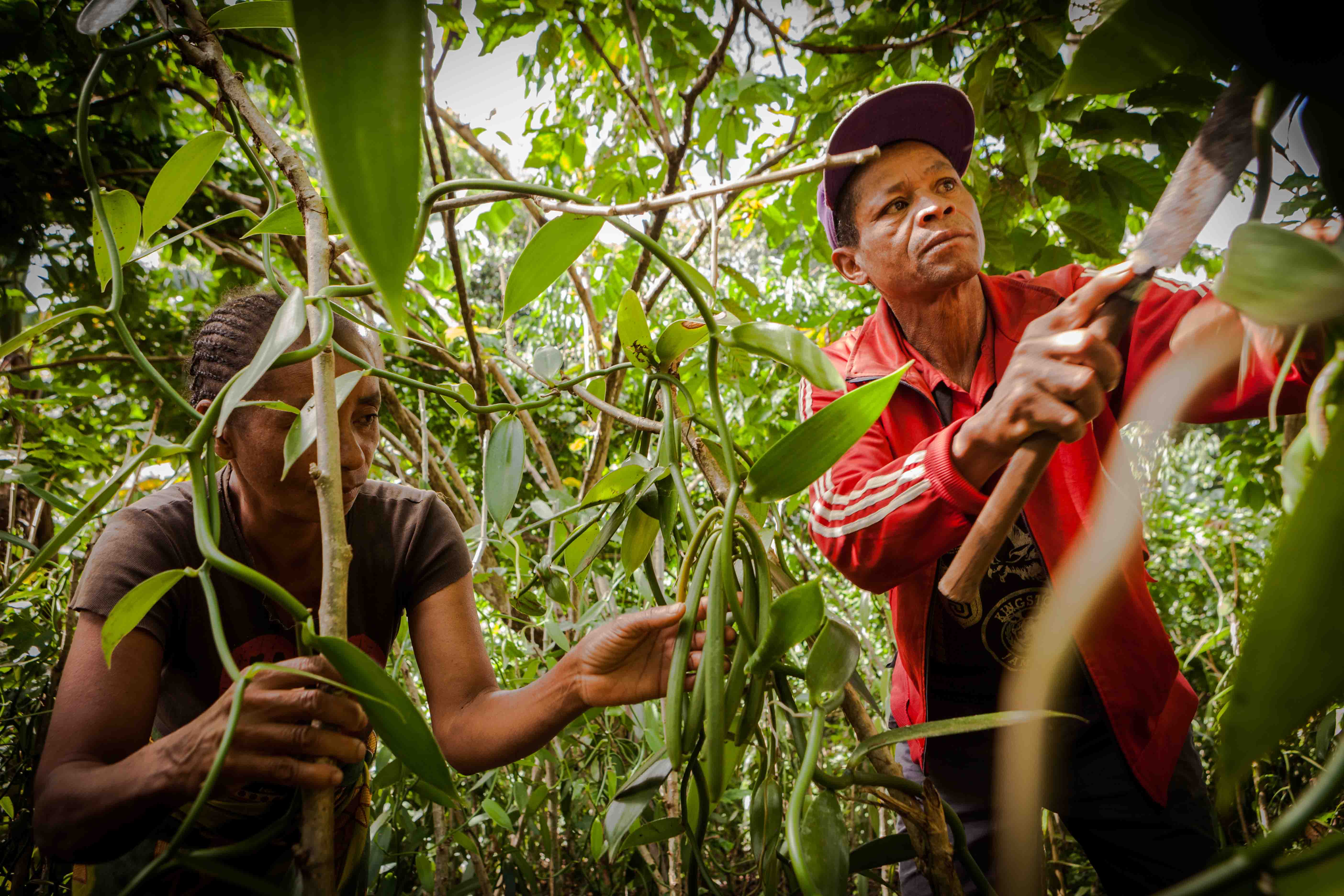Revenue for nature and communities
Posted on October, 13 2020
Since 2017, WWF has been implementing a program to support community-based natural resources management in the Marojejy- Anjanaharibe Sud - Tsaratanana forest corridor (COMATSA) in Northern Madagascar.
To improve the resilience of people and ecosystems, a total of seven community-based organizations are supported. Climate-smart agriculture and sustainable cash crops, community savings and linking with the private sector to integrate communities into sustainable value chains have been in place since 2017.It must be understood that traditional agriculture, based on rain-fed farming, is highly dependent on the climate, leaving farmers at the mercy of any climate change. On the other hand, climate-smart agriculture, agroforestry and new rice cultivation techniques ensure that families have diversified and sustainable incomes throughout the year. These are more interesting solutions because the choice of crops and the varieties chosen are adapted to the cropping calendar. They also reduce the shortfalls related to the lean season. The choice of cash crops with high added value such as vanilla supports families and communities. The fact that farmers work in certified value chains and with collectors provides them with sustainable incomes. Above all, they are trained to optimize the quality and value of the products that are certified. To date, 41% of households in the seven grassroots communities supported by WWF have adopted farming techniques adapted to climate change.
Then, the establishment of community savings structures in villages and communes allows money saving. The funds thus saved are reinvested in forest conservation : setting up nurseries for young seedlings, financing community patrollers to monitor the forests, producing sensitization and information signs, conducting reforestation activities ... In a region where slash-and-burn agriculture and selective cutting is the first reflex during the lean season, ensuring a sustainable financing mechanism to support sustainable forest management is critical. For Damien, a community patroller in Ambodimanga-Ambavala, in the vicinity of COMATSA, "the forests are dear to us and we are aware of the impact of deforestation on our agriculture and way of life".
Since 2017, therefore, local community organizations have sustainable management plans for the protection of some 50,000 ha of forests on the eastern slope of COMATSA. These plans include the setting up of nurseries with annual objectives of reforestation and restoration of degraded forests. They also contain community regulations, "dina" linked to poaching and other illegal activities that destroy the forest. The communities also have patrol plans, where community patrollers monitor and survey their forests with the support of the SMART tool and the authorities. "The advantage of harmonizing these monitoring tools is that it allows all protected area managers to take appropriate management actions and evaluate their management performance both locally and internationally," explains WWF's Rasolozaka Tojo. Community efforts are not in vain despite the difficulties. Indeed, deforestation in COMATSA has decreased from 4,222 ha in 2018 to 1,798 ha in 2019 according to the results of satellite image analysis (WWF).
